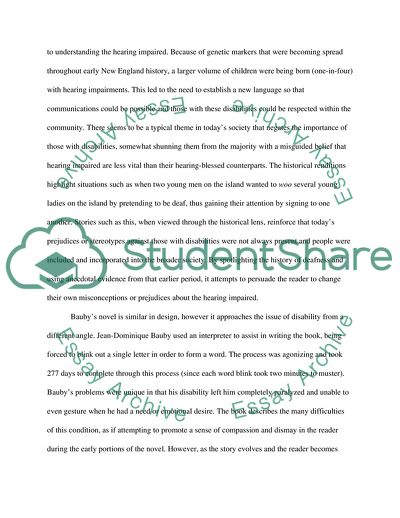Cite this document
(Groce's and Bauby's Novels Pertaining to Disability Book Report/Review, n.d.)
Groce's and Bauby's Novels Pertaining to Disability Book Report/Review. Retrieved from https://studentshare.org/health-sciences-medicine/1745100-disability-studies
Groce's and Bauby's Novels Pertaining to Disability Book Report/Review. Retrieved from https://studentshare.org/health-sciences-medicine/1745100-disability-studies
(Groce's and Bauby'S Novels Pertaining to Disability Book Report/Review)
Groce's and Bauby'S Novels Pertaining to Disability Book Report/Review. https://studentshare.org/health-sciences-medicine/1745100-disability-studies.
Groce's and Bauby'S Novels Pertaining to Disability Book Report/Review. https://studentshare.org/health-sciences-medicine/1745100-disability-studies.
“Groce's and Bauby'S Novels Pertaining to Disability Book Report/Review”. https://studentshare.org/health-sciences-medicine/1745100-disability-studies.


